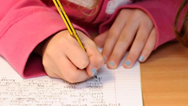Whitley Park Writing
Intent
At Whitley Park, our intention is that every child becomes a confident, fluent and creative writer. We want pupils to:
- Have access to high quality texts which inspires their writing and creativity
- Write for a range of purposes and audiences with clarity, accuracy and imagination.
- Develop strong control of grammar, spelling and punctuation, applied within meaningful contexts.
- Build stamina, resilience and independence through the drafting and editing process.
- Express their individuality and creativity through writing, while mastering the technical aspects of the English language.
- Take pride in their presentation and celebrate their achievements as authors.
- Be fluent in letter formation and handwriting
Our goal is for all pupils to leave Whitley Park able to communicate effectively through writing, equipped with the skills to succeed in their future education and beyond.
Implementation
At Whitley Park, writing is taught through the Literacy Tree Writing Roots programme, which offers high-quality, book-based units that engage and inspire young writers. We believe that children should have access to high-quality texts by a range of significant authors to support and enhance their writing. To ensure this, we have made a significant investment so that every child has access to the text they are studying in each writing unit. This allows pupils to fully immerse themselves in the book, deepening their understanding and enriching their writing experience.
Writing is timetabled for one hour each day, ensuring consistent opportunities for practise and progress. Grammar, punctuation, and spelling are taught within the context of writing, making learning purposeful and meaningful. Learning is regularly revisited and embedded, supporting children in becoming confident, fluent writers. Each child has a personal Writing Dashboard outlining the key skills they need to master for their year group. These dashboards include clear explanations of grammar expectations and helpful examples to support children in developing their writing.
Through regular drafting, editing, and publishing cycles, pupils build independence and resilience in their writing. All children, including those with SEND or lower prior attainment, access high-quality teaching, with scaffolds and targeted interventions provided as needed.
Handwriting is a foundational skill, which all children need to secure their success in writing. Practice of this is built into the timetable, and we use the Nelson handwriting scheme to support this along with a clear progression of the skills children need to secure by the end of Key Stage 1. Please see our handwriting progression document below.
Spelling
Intent
Our intention is that all pupils develop accurate, fluent and confident spelling skills. We want children to:
- Understand and apply spelling rules and patterns consistently in their writing.
- Develop a wide vocabulary through explicit teaching of spelling, morphology and etymology.
- Transfer spelling knowledge into independent writing across the curriculum.
- Recognise spelling as an essential component of clear and effective communication.
By the end of Year 6, all pupils should be able to spell the statutory word lists accurately and apply key rules independently in their writing.
Implementation
- Spelling is taught explicitly through the Literacy Tree Spelling Seeds, which provide structured and progressive lessons.
- A variety of approaches are used, including phonics, morphological and contextual strategies, to ensure all learners can access the spelling curriculum.
- Pupils complete half-termly spelling tests focused on key spelling rules for their year group.
- Weekly spelling sheets are sent home, highlighting the rule being taught, to support practise at home.
- Spelling is timetabled for 30 minutes, four times per week, with additional opportunities for application in writing.
- Assessment is ongoing through PIXL SPaG tests, half-termly spelling tests, classroom monitoring and evaluation of writing outcomes.
Please see our writing and reading spine for each year group below to see the range of texts the children cover in each year group.


